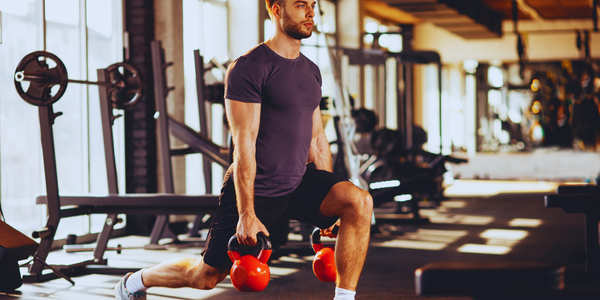What Is Pilates? Benefits and Basics for Beginners
Discover the benefits of Pilates for beginners - from core strength to improved flexibility. Learn the basics of this effective workout routine.

Pilates has been around for nearly 100 years and is getting more popular. It's great because you can make it fit your health goals, no matter your age or fitness level. It's perfect for beginner Pilates fans. You can get better at flexibility, core strength, and body awareness.
Doing Pilates regularly can help you stay flexible and avoid injuries. It also improves balance and coordination. This can help you avoid falls and accidents. Pilates is a mix of strength training and stretching, which is good for your heart, even if it's not as hard as other cardio.
https://www.youtube.com/watch?v=V6Cvpqqqcn4
Pilates is a form of exercise that has been around for nearly 100 years. It's getting more popular because of its health benefits, like helping with lower back pain and improving flexibility. Doing Pilates at least two times a week can show results. It's good for people of all ages, but it's really helpful for older adults to keep them flexible and balanced.
Key Takeaways
- Pilates has been practiced for nearly 100 years, indicating its longevity and growing popularity in fitness.
- Pilates can be tailored to fit individual health goals, regardless of age, sex, health status, or fitness level.
- Regular Pilates practice can improve flexibility, reducing the risk of injury during physical activities.
- Pilates focuses on building core strength, including the abdomen, sides, mid to lower back, buttocks, and hips.
- Pilates is suitable for individuals of all age groups, but it's very beneficial for older adults to enhance flexibility and balance.
- Pilates can support weight loss when combined with a balanced diet and cardio exercises.
Understanding Pilates Basics: Core Principles and Foundations
Pilates exercises help improve strength, flexibility, and posture. They focus on building core strength and proper alignment. As you start Pilates, knowing the basic principles is key. These include concentration, control, centering, precision, breath, and flow.
Core strength is a big part of Pilates. It's important for stability and strength in daily life. About 60% of Pilates exercises work on the core. Beginners should practice Pilates 2-3 times a week to see improvements. You can learn more about Pilates muscle building and its benefits.
Pilates offers many benefits like better posture, stability, and flexibility. It also improves body awareness. To start, you'll need a good Pilates mat. You can also use equipment like the Reformer or resistance bands to make your workout better.
Exploring Pilates, you'll find different styles like Classical, Contemporary, Clinical, and Fusion Pilates. Each style has its own features and equipment. Finding the right style for you can enhance your Pilates experience. With regular practice and patience, you'll enjoy the many benefits Pilates offers.
The Comprehensive Benefits of Pilates Training
Doing a Pilates workout can greatly improve your physical and mental health. It helps with flexibility, core strength, and body awareness. It also boosts your mental health. You can find more about Pilates and how to start at Pilates resources.
Some key benefits of Pilates are:
- Improved flexibility and range of motion
- Increased core strength and stability
- Enhanced body awareness and posture
- Reduced stress and improved mental health
Adding Pilates to your fitness routine can bring these benefits and more. It focuses on controlled movements and breathing. This makes Pilates a low-impact yet effective way to improve your health. It's great for everyone, whether you're new or experienced.
Conclusion: Starting Your Pilates Journey
Starting your Pilates journey is exciting. It's important to begin slowly and be patient. Pilates is great for improving your health and well-being. It offers many benefits, like better flexibility and posture.
Look for a qualified instructor to help you with Pilates exercises. Studios often have introductory packages or trial classes. Websites like activeman.com can also provide information on at-home workouts. Always listen to your body and avoid overtraining to prevent injuries.
Regular Pilates practice boosts core strength, flexibility, and body alignment. This can lead to better posture and less back pain. Joseph Pilates said, "In 10 sessions you'll feel the difference, in 20 you'll see the difference, and in 30 you'll have a whole new body." Pilates is perfect for all fitness levels, even those recovering from injuries or with joint problems.
By following these tips, you'll enjoy the many benefits of Pilates. Start your Pilates journey today and become a stronger, more flexible, and mindful version of yourself.
FAQ
What is Pilates and how can it benefit my overall health and wellness?
Pilates is a workout that focuses on core strength, flexibility, and body awareness. It's great for beginners. It can improve your physical and mental health, reduce pain, and boost your overall well-being.
What are the core principles of Pilates and how do they contribute to its effectiveness?
Pilates emphasizes proper alignment, breathing, and movement. These principles engage your core muscles, improve flexibility, and enhance body awareness. They are key to getting the most from your Pilates workout and avoiding injuries.
What kind of equipment do I need to get started with Pilates, and are there any benefits to using a reformer or mat?
You don't need special equipment to start Pilates. Mat-based exercises are a good place to begin. As you get more comfortable, you can add equipment like a reformer or mat. They offer extra support and challenge, helping to strengthen your core and improve flexibility.
How often should I practice Pilates to see noticeable benefits, and what are some tips for creating a consistent routine?
Aim to practice Pilates 2-3 times a week to see benefits. Start slow and focus on proper technique. Find a good instructor, make a schedule, and stick to it. This will help you stay consistent and get the most from your Pilates workout.
Can Pilates help with pain relief and injury rehabilitation, and what are some modifications that can be made for beginners or those with limitations?
Yes, Pilates is great for pain relief and injury rehab. It improves flexibility, reduces muscle tension, and strengthens the core. For beginners or those with limitations, you can use props or modify exercises to avoid straining joints or muscles.
How does Pilates compare to other forms of exercise, such as yoga or weightlifting, and what are some benefits of incorporating Pilates into my fitness routine?
Pilates combines elements of yoga, dance, and physical therapy. It's a low-impact, core-strengthening workout that improves flexibility, balance, and physical fitness. Adding Pilates to your routine can enhance your fitness and reduce injury risk.
👉 Join the Active Man Community
Get expert tips, workout guides, nutrition hacks, and the latest trends delivered straight to your inbox every week. No spam — just actionable insights to help you live stronger, healthier, and better.





